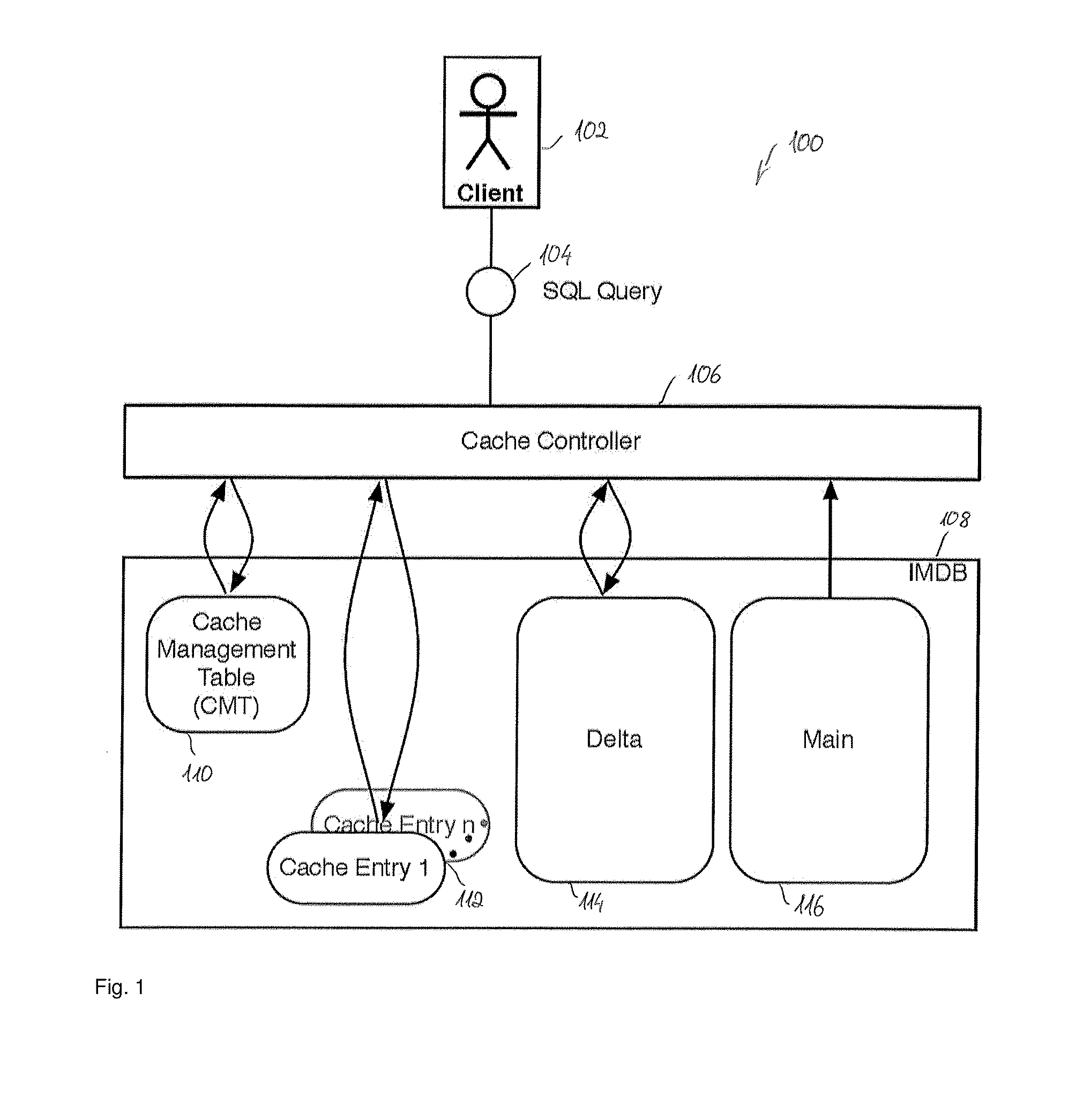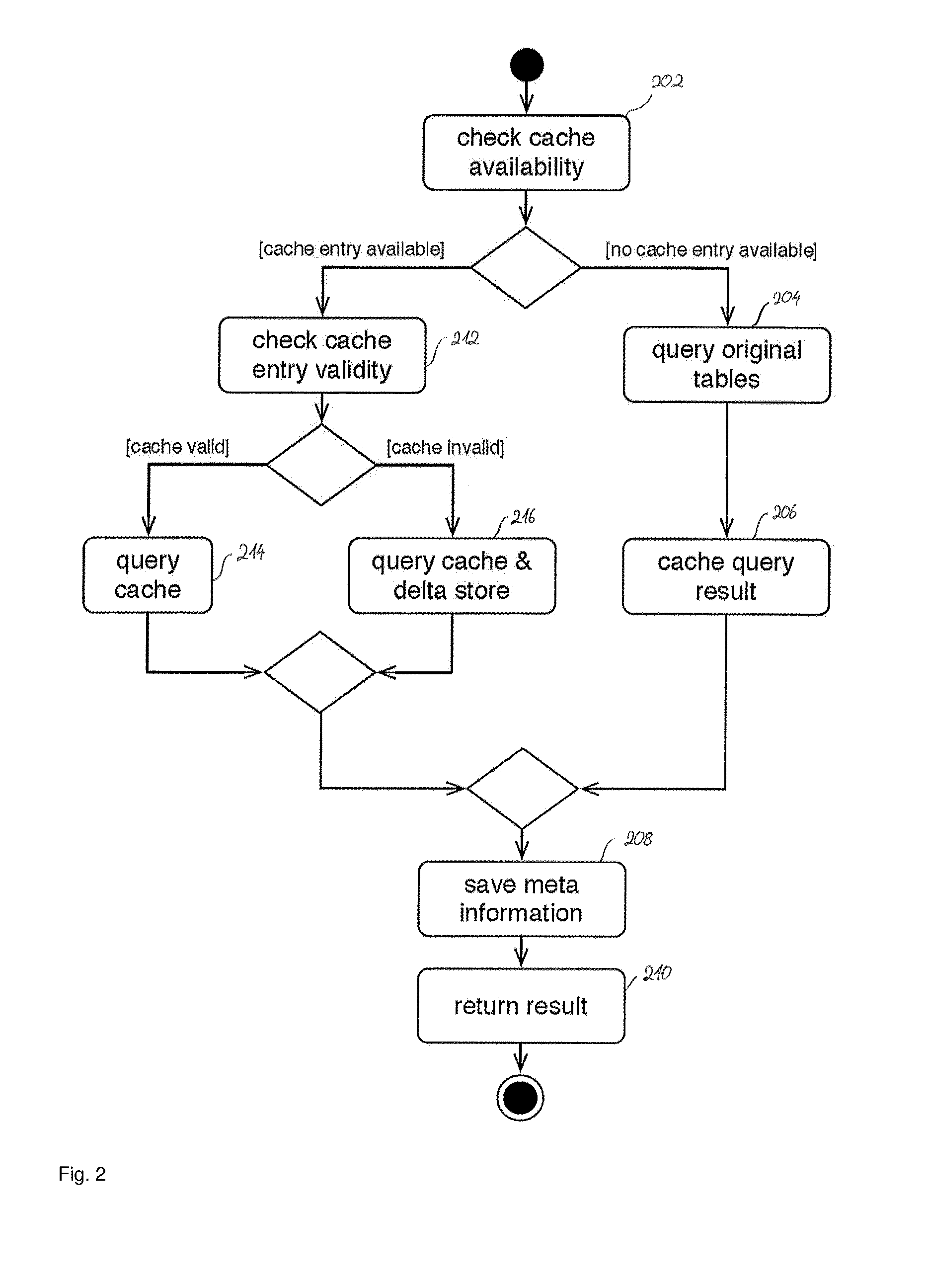Aggregate query-caching in databases architectures with a differential buffer and a main store
- Summary
- Abstract
- Description
- Claims
- Application Information
AI Technical Summary
Benefits of technology
Problems solved by technology
Method used
Image
Examples
Embodiment Construction
[0174]In the following description, for the purpose of explanation, an example embodiment of the invention is described. The specific details are set forth in order to provide a thorough understanding of the example embodiments. It will be evident, however, to one skilled in the art that the present invention may be practiced without these specific details.
A.
[0175]An example embodiment is shown in FIG. 1, the example embodiment being a computer system 100 comprising a processor, a database 108 coupled to the processor, the database comprising: a main store 116 for storing records, a differential buffer 114 for receiving and buffering new records, the differential buffer being coupled to the main store, preferably for merging buffered records into the main store, and a cache store 112 for caching a result of a query. The computer system 100 further comprises a cache controller 106 executable by the processor and communicatively coupled to the database 108. The cache c...
PUM
 Login to View More
Login to View More Abstract
Description
Claims
Application Information
 Login to View More
Login to View More - R&D
- Intellectual Property
- Life Sciences
- Materials
- Tech Scout
- Unparalleled Data Quality
- Higher Quality Content
- 60% Fewer Hallucinations
Browse by: Latest US Patents, China's latest patents, Technical Efficacy Thesaurus, Application Domain, Technology Topic, Popular Technical Reports.
© 2025 PatSnap. All rights reserved.Legal|Privacy policy|Modern Slavery Act Transparency Statement|Sitemap|About US| Contact US: help@patsnap.com



